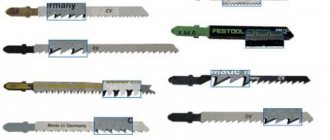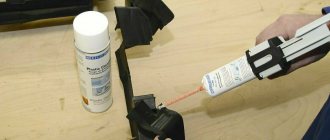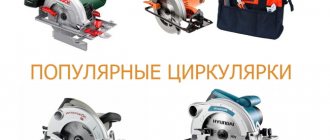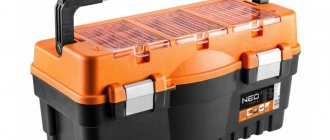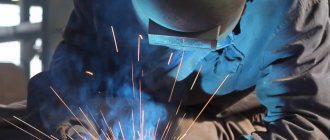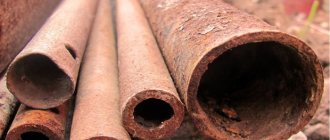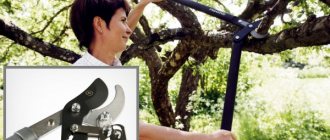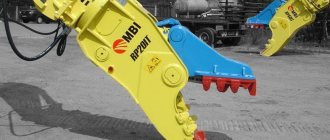I have been doing car tuning for several years now and not long ago I was faced with the question of how to glue plastic to metal. In this publication I will tell you in detail which tools do a good job of this task.
Source kraski-net.ru
What glue to use to glue plastic to metal - Metalist's Handbook
Plastic products are widely used in everyday life. If they break, you need to know what kind of plastic glue you will need for repairs. To ensure a strong and safe gluing result, we advise you to become more familiar with the types of plastic and the rules for selecting an adhesive composition.
What does the marking on plastic mean?
Since some adhesives may dissolve rather than bond plastic, it is recommended that you examine the markings on the broken product.
The plastic type icon looks like a triangle formed from arrows (recycling symbol). Inside it there are numbers from 1 to 7, and below there is an inscription.
These identification marks determine whether the material belongs to a particular type of plastic, which will allow you to select the correct adhesive.
What types of plastic exist:
- 1 (PET) - stands for polyethylene terephthalate. It is used to produce food packaging for liquid products.
- 2 (HDPE) - high-density polyethylene, intended for the production of packaging and shrink film.
- 3 (PVC) - polyvinyl chloride, better known as PVC. Plastic windows, linoleum, etc. are made from it.
- 4 (LDPE) - low-density polyethylene; toys for children, pipes, bottles, and packaging containers are made from it.
- 5 (PP) - polypropylene, heat-resistant material. It is used for the production of food packaging, disposable medical instruments, household appliances, pipes, thermal utensils.
- 6 (PS) - polystyrene. Disposable tableware is made from it. Foamed polystyrene is widely used in construction.
- 7 (O) - this type of plastic cannot be recycled and consists of a mixture of polymers, paper, and foil.
Glue second
Glue marking
The main difficulty is that the glue markings do not match the plastic recycling symbols.
How is glue for plastic marked?:
- PE - polyethylene;
- PC - polycarbonate;
- PP - polypropylene;
- PVC - polyvinyl chloride;
- PMMA - organic glass;
- PUR - polyurethane;
- PA 66 - polyamide.
Sometimes it is easier to find clear instructions in Russian than a marking icon. But if there are no recommendations on the packaging, then the symbols will help you make the right choice.
Types of glue
Plastic has low adhesion due to its smoothness, making it more difficult to glue than other materials. In industry, such products are fastened by welding.
This method is not used at home, but you can choose a good glue. The principle of operation of the composition is this: it dissolves the surface, and with strong squeezing the parts are connected.
Therefore, the main component of plastic adhesive is a solvent of synthetic polymers. For viscosity, the composition contains liquid polystyrene.
Liquid glue for plastic and Moment plastic
The group of adhesives for plastics can be divided into the following types:
- Hot melt adhesive . Represents solid adhesive rods. They must be heated before use. There are special guns for convenient application of hot melt glue, and there are also types of glue for use without a gun. This composition is suitable for small jobs, as it does not have special bonding strength.
- Contact . It is often sold complete with a hardener, which must be mixed with the bulk in the proportions indicated on the pack. This type of glue can tightly glue plastic, but there is one drawback: the product is toxic. It is necessary to use personal protective equipment. For better fastening of the parts, after applying the glue, you need to wait 10 minutes, and only then squeeze them tightly.
- Liquid plastic adhesive is water-based and is considered the least effective bonding method. It takes a long time to dry (at least a day). It is used to repair small items that are not subject to increased loads. But liquid glue samples do not deform the plastic; this is very important for working with small parts.
- Reaction is a reliable and affordable adhesive option for plastics. There are several types of such compositions: some are designed to work under water, others harden under the influence of ultraviolet radiation, and others work in the open air. There are one-component and two-component ones.
3M Scotch-Weld PR100
Advice! Do not use toxic contact adhesive to glue children's toys.
Product examples
What can be found on the shelves of construction and hardware stores:
- “ Moment plastic” is a type of glue that connects many types of plastics. It has a transparent base, sets quickly and forms a strong connection. This is a waterproof and heat-resistant composition. However, it contains toxic substances and is not used to repair products that come into contact with food or skin.
- “Super Moment ” - second glue.
- 3M Scotch-Weld PR100 is an epoxy adhesive that hardens in 20 seconds. Simple and easy to use composition.
- " Cosmofen " is a brand that offers several types of glue for plastic. Among them are adhesive-sealant for transparent plastic, Plus composition for PVC, PMMA - adhesive for polystyrene and acrylic surfaces.
- " Second " - superglue for hard plastics. One of the fastest acting compounds.
- For minor car repairs, special automotive plastic sealants are sold.
- Rexant is a hot melt adhesive, available in the form of rods. It can be transparent or colored (to disguise joints if colored parts are connected).
- Akfix HT300 is a heat- and water-resistant composition. Withstands temperatures up to +300 degrees. This adhesive sealant contains silicone. It reacts to humid air.
This is not the entire range that the adhesive industry offers. It cannot be said that any glue is better or worse. Each composition is designed for specific types of work. Read the instructions carefully and follow all recommendations.
Rexant and Akfix HT300
How to glue plastic
The type of plastic has been determined and the required glue has been selected. How to properly glue plastic objects:
- Parts should be cleaned. If necessary, degrease the item with soap solution or ethyl alcohol. A clean surface has greater adhesion and objects will be easier to stick to.
- It doesn't hurt to lightly sand the surfaces to roughen them up. This way the glue will stick better.
- Two-component compositions are mixed only after surface preparation.
- If parts are coated with glue using a brush, then use an object with artificial bristles.
- The glue is applied in such an amount that when compressed, its excess does not protrude to the surface.
- You need to squeeze objects together firmly, but carefully.
- The duration of adhesion of materials depends on the selected adhesive.
Advice! Use a needle to glue a thin crack.
Sometimes you need to attach a variety of materials to plastic: wood, glass or metal. In this case, the glue must take into account the characteristics of the two surfaces being connected, and not just the plastic.
Glue Super moment
Tips for working with plastic :
- For external work, waterproof glue is used.
- Despite the high temperature that the glue can withstand, plastic objects themselves should not be exposed to it.
- When working with contact adhesive, it is necessary to ventilate the room.
- The best adhesive for marking 7 (O) is epoxy. This type is also suitable for polystyrene.
- If there is no marking on the product, then proceed from this: for plastic toys and artificial glass, polystyrene is used mainly; For bottles, buckets and boxes, glue designed for polypropylene and polyethylene is suitable.
Take the time to study the labeling of plastic products and glue. If repairing small toys like Lego is a simple process, then for more serious work the familiar Secunda glue may not be suitable for everyone.
Bonding concrete with various materials
Construction work requires gluing various materials to concrete: plastic, drywall, rubber, metals. Bonding technology is developing, the strength of the joints remains for decades, it is important to adhere to the stages of work, using high-quality materials.
Connection technology
The main stages of gluing concrete to various materials include identical steps that must be followed to obtain a reliable fastening.
Preparatory processes
Clean the concrete surface from dust and dirt. New surfaces do not require much preparation. Dust is removed with a damp brush. Repair involves cleaning of residual adhesive mixtures. Significant differences require additional leveling with a layer of cement mortar or plaster.
Primer
After priming the concrete, the adhesion of its surface increases.
When gluing concrete to a variety of materials, concrete is primed! The adhesion of the cement surface, which was initially low, increases. There are several types of soil on the construction market:
- universal;
- deep penetration;
- specialized.
Dichloroethane
This composition is considered universal, as it has good contact with various types of materials and securely fixes them to each other. The composition is offered in the form of a clear liquid. But I want to note that it is not suitable for all types of metal. For example, it has poor contact with aluminum and enameled coatings. Accordingly, it is not used on the outer part of the car body, because even if it sticks plastic, it will not last there for long.
Gun glue
This composition is similarly used in various fields. Among the advantages are its sufficient elasticity and reliable fixation. This composition is sold in the form of flexible tubes with a diameter corresponding to the firebox of a hot-melt gun. You can even choose by shades. Although the adhesive composition reliably glues together parts of different structures, over time the seat becomes loose and, as a result, the glued fragments can lag behind each other at the most unexpected moment.
Source ruletka24.ru
What glue to use to glue plastic to: plastic, metal, chipboard, tile, concrete
The modern world is unthinkable without plastic products; the lightweight material is used everywhere: construction, decorations, furniture, dishes, decorative elements, household appliances. Polymer products do not rust, are beautiful, but not always durable. Therefore, breakage of plastic items occurs frequently; every time something is dropped, the problem arises of how to restore the broken product.
Universal glue
Don’t be upset - there are no eternal objects, and you shouldn’t throw away a broken thing. Today there are no problems in repairing any material, even polymer. You just need to think about how to glue your favorite thing together.
Deciding on the material
It turns out that there are different types of polymer, so sometimes all our attempts to glue a polymer product together do not lead to the desired result.
It is impossible to determine the type of polymer by eye or touch, so let’s inspect our product for markings that resemble a Mobius Loop with different meanings. Types of polymer can be seen in the photo. Depending on the marking, you can choose glue today for any product. But even in the case when an advertisement invites you to purchase a universal miracle glue, you should not count on effective gluing; perhaps this is just a PR trick.
Having “recognized” the polymer material more closely, you need to select your own solvent for its type:
- Brand PA66 is glued using a solvent containing formic acid.
- The PMMA grade requires dichloroethane.
- ABS - acetone glue is suitable.
Types of glue for metal products
When choosing which glue is best for metal, it is worth looking at the types of these substances.
- Anaerobic. This type is good because when it dries, it becomes a solid polymer that tightly connects the two components. Does not react with chemical compounds. Can withstand up to 140 degrees.
- Water resistant. It is intended for those materials that are subject to constant exposure to water and moisture in general. Good for eliminating water leaks.
- Epoxy. It's universal. Used in many conditions. Resistant to aggressive chemicals. Resistant to different temperatures.
- Heat resistant. Designed for use in conditions of significant temperature changes. Withstands up to three hundred degrees. And some modifications reach up to a thousand.
- Cyanoacrylate. More or less universal. Used in different conditions. Very durable. Only not resistant to high temperatures, and dissolves in acetone.
The best superglues for plastic
The most popular method for gluing broken parts or assembling miniature models is superglue. The name itself speaks of the extraordinary speed of gluing and high bonding strength. Among the huge variety of tubes, experts have identified several products.
Universal Moment Super Second
When quick fixation is needed, Henkel's Super Seconds are a big help. Since this model is universal, it can be used to fasten objects made of plastic, wood, ceramics, porcelain or rubber. It is also suitable for porous products with high absorbency properties. To do this, apply a thin layer of “Super Second Moment” to one of the surfaces of the part, after which you must immediately apply another part. Both parts must be tightened and held for a few seconds. Immediately after this, the fixed elements are ready for further use. It is best to work with gloves and a mask. Because if the product gets on the skin, it will instantly stick. Super Seconds should not be used on utensils that are used for eating or cooking.
One tube contains 3 grams of glue.
Average cost 55 rub.
Advantages:
- instant capture;
- suitable for any material;
- transparent seam;
- price.
Flaws:
- strong smell;
- the product remains in the tube;
- dries quickly.
Second super instant
This cyanoacrylate product is suitable for gluing parts made of any materials. It is designed to work with leather, plastic, porcelain, metal, rubber and cardboard. "Super Flash Second" is waterproof, suitable for both outdoor and indoor use. It will cope with its task in the temperature range from -30 to +50 degrees. And gluing takes only three seconds.
One tube contains 20 grams of the finished product, which is enough for a large amount of work. With a convenient lid, you can easily store leftover glue until your next need.
The average cost is 120 rubles.
Advantages:
- volume;
- dries in 3 seconds;
- Suitable for all materials.
Flaws:
- No.
Super glue "CONTACT"
An excellent two-component option, suitable for gluing products made of ABS, polypropylene, etc. Provides reliable fixation for several years. The seam is almost invisible and does not stand out over time.
Sold at a price of 230 rubles.
Advantages:
- perfectly glues synthetic elements;
- reliability;
- good composition;
- useful marker.
Flaws:
- high price.
BRAUBERG for plastics
An excellent universal product suitable for all types of work. Thanks to the high density of the adhesive, this reduces consumption. It has found application both in creativity and tasks, and in the creation of complex products in laboratories. A special cap allows you to reuse the product several times.
Average price 12 rubles.
Advantages:
- reliable adhesion to the surface;
- compound;
- reusable;
- waterproof.
Flaws:
- setting time: up to 60 seconds.
Henkel Super Moment Maxi
Instant bonding of plastic and plastic is highly appreciated by professionals. Not all adhesives are up to the task, but Henkel's Super Moment Maxi is up to the challenge. It not only fastens quickly, but also securely binds different materials. In addition to polymer parts, the composition can glue metal, cardboard, ceramics and porcelain.
The manufacturer has made soft and comfortable packaging and an elongated tube spout. This made it possible to carefully and economically apply the glue, without the master’s hands being in the solution. The cap is easily removed and, when closed, prevents air from entering the tube.
Average price: 292 rubles. (20 g)
Advantages:
- instant adhesion to the surface;
- economical consumption;
- adhesives and other materials;
- gluing quality.
Flaws:
- not found.
Superglue POWER
High-quality superglue STRENGTH is sold on the domestic market at an affordable price. At the same time, the composition firmly adheres to plastic, plastic, porcelain, glass, leather and wood. Thanks to the convenient tube, the required amount of glue can be applied precisely to the surface of the workpiece.
This has a positive effect on consumption. Experts note the absence of diffusion; the gel does not drip onto other objects or hands. The product is based on ethyl cyanoacrylate with the addition of thickeners. After drying, the adhesive seam becomes transparent, which is important when gluing white or colored materials. The adhesive strength during testing was 175 N.
Average price: 50 rub. (3 g)
Advantages:
- glues quickly;
- convenient to use;
- no pungent odor.
Flaws:
- not often enough.
Economy Express Universal
Universal Chinese superglue Econ Express has an instant effect. It is easy to use, quick to set up, and unpretentious in operation. The composition is suitable for gluing plastic and plastic, metal and paper, rubber and porcelain. Experts note the high strength of the adhesive seam, which can withstand a load of 210 N. The use of glue is quite standard, the surface of the parts is cleaned and degreased, applied to one of the parts, the compression time is 5. -60 seconds.
Users note the low price of the composition, good quality and reliable tailoring. Even under the influence of water, the glued parts do not peel off. Consumers also respond positively to the sealed lid, which prevents air from leaking through. Disadvantages include a strong odor, which can cause headaches when working in a small, unventilated room.
Average price: 33 rubles. (3 g)
Advantages:
- affordable price;
- reliability;
- sealed hood;
- waterproof.
Flaws:
- strong smell.
Permatex Super Glue
Superclue Permatex Super Glue with a gel-like consistency has high adhesive strength to plastic. During comparative tests, experts from the magazine “Behind the Wheel” recognized it as the winner. The destruction of the adhesive seam occurs under a load of 245 N, which significantly exceeds the performance of competitors. In addition, the practicality of using glue when it is necessary to glue thin parts is noted. The product is recommended for gluing hard-to-reach and vertical surfaces. High adhesion strength is observed on non-porous plastics.
Average price: 126 rub. (2 g)
Advantages:
- sets quickly;
- easy to use;
- transparent seam;
- economical consumption.
Flaws:
- No.
Surface preparation
In order for the adhesive joint to be strong and durable, it is necessary to ensure the maximum possible area of contact between the surfaces. To do this, they are treated with abrasive materials - a wire brush or sandpaper.
If the objects to be glued are small in size, they can be processed manually, but if the surface is quite large, it is better to use special power tools. This treatment allows not only to obtain the necessary roughness, but also to eliminate various contaminants - paint, rust, etc.
The second stage of processing the bonded surfaces is degreasing, without which it is difficult to obtain the desired result. To remove the smallest particles of grease, paint and other contaminants, the products are first washed with water and soap dissolved in it, after which the composition is washed off with running water.
Next, the surfaces need to be treated with a solvent - kerosene, gasoline, turpentine, acetone or another product. However, one must take into account the fact that some compounds can corrode plastic, which is unacceptable for bonded surfaces.

